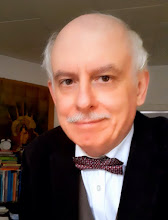A good example of materialist thinking, seriously lacking basic psychology and philosophy, is this video by Mr Anil Seth, professor of consciousness (no less) at Sussex University, which tries to advance the idea that we are creating our reality, implying that ‘real’ reality out there is basically unknown to us, and that therefore we have to be tolerant for other people’s way of seeing the world, because they can’t help how their brains work. ‘The brain is actively generating our experienced worlds’. ‘Are we all living in a hallucination?’
On the website of the BBC:
https://www.bbc.co.uk/ideas/videos/are-we-all-living-in-a-hallucination/p0cjqx25
Reality is thus described as an entirely subjective, individual process, separated from the world ‘out there’. This is presented as a new insight, while this has been an old claim of philosophy since Emmanuel Kant (late 18th century) – the ‘Ding an sich’ (‘thing in itself’) we cannot know because our senses are ‘in between’, making their own version of the Ding an sich.
The silly examples in the video of human mis-interpretations of vision
is then presented as a demonstration of the existence of ‘inner diversity’,
supporting the claim of hyper subjectivity of experiencing reality, instead of
the obvious differences in interpretative capacities which exist as normal
variations in the human species and have been observed for millennia. In other
words: people vary quite much in terms of intelligence and capacities of perception. That does not mean there exist different forms of reality as created by different individuals. Such
thinking as embarrassingly exposed in the video is unacceptable for a lecturer at a university, it is seriously misleading – wrapping blatantly obvious observations into a quasi-scientific
cloth which does not elucidate but lowers a veil over the subject. Poor
students! If they have any misgivings about professor Seth’s lecturing, they
must consider themselves suffering from ‘inner diversity’. But if they think this through, they must conclude that it is the professor's brain which defines his peculiar conclusions, so they don't have to take it very seriously, and merely be tolerant of his ideas.
The very research as mentioned in the video makes clear that the way the
brain is interpreting the input from the senses is deeply embedded in its
structure, as a result of evolution. A materialist approach – i.e. one which
does not deal with posible wave lengths of reality that cannot be physically
investigated under laboratory conditions, or with subjective experience of the human psyche – only sees the physical separatedness of humans from their surrounding
world, while a more psychological, and common sense insight clearly shows that this embedded
interpretation process demonstrates that we are part of the surrounding world in a
fundamental, profound way: nature has created humans as part of its own
evolution, including their psyche, their consciousness. It is not the brain that creates our experience of surrounding
reality, but it is the mind that is connected with reality through its
interpretation of the workings of the ‘machinery’, the brain, comparable with
the radio set that makes the programme intelligible to the mind.
Of course such misconceptions open the way to thinking that we can really create our own reality, through 'virtual reality' technology, with the claims that this is as ‘real’ as conventional reality. It is not difficult to imagine to which disastrous mistakes such thinking may lead. Such ‘research’ is, for instance, giving teeth to the egalitarian world view which already creates such havoc in culture, where standards of quality are dismissed as suppressing individual rights.

No comments:
Post a Comment